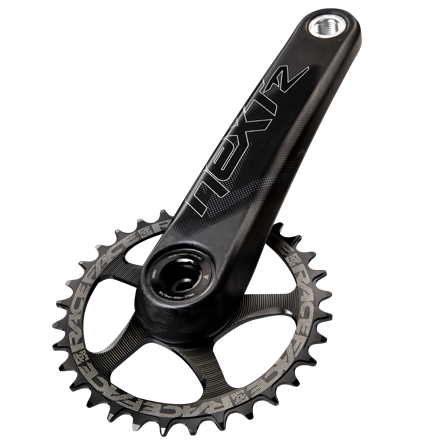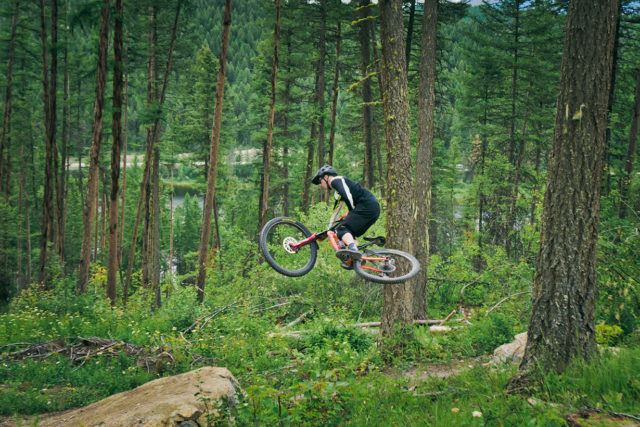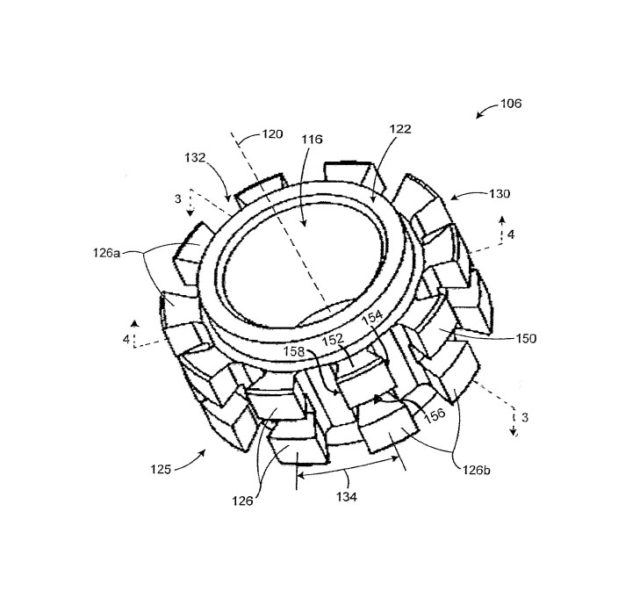
Race Face Next R Cranks
Intended Use: Enduro
Configuration Tested: 170 mm length; PF92 Bottom Bracket; 32t direct mount ring
Blister’s Measured Weight:
- Cranks only: 409 grams
- Bottom Bracket (PF92): 70 grams
- 32 tooth direct mount ring: 71 grams
- Total: 550 grams
MSRP: $479.99 (No BB, No Chainring)
Mounted to: 2018 Trek Slash
Reviewer: 5’9”, 150 lbs
Test Locations: Montana; British Columbia
Test Duration: ~2 months
Intro
I’ve made it pretty clear in the past that I’m a fan of the Race Face cranks. I called the Next SL G4 the best Trail-oriented cranks I’ve ridden, and I also really like the SixC cranks. The Next R cranks fall in between those two options (with the Next SL G4’s coming in around 40 grams lighter, and the SixC coming in about 80 grams heavier).
So earlier this season when I was putting together a bike for my adventures racing the Trans BC, some Race Face cranks seemed like the logical option. Given that I’d be doing some Enduro-ing, and the Next R’s are designed for Enduro-ing, I figured I couldn’t go wrong. So how they’d do?
We’ll get to that in a second. First, some technical stuff about why I like these cranks:
The Cinch System
Race Face’s Cinch system has been around for a bit now, and after having spent quite a bit of time on it on a number of different cranks, I’m a big fan. Why? Because it’s quick and easy to swap out bottom bracket spindles. Why does that matter? Because the bike industry can’t settle on a bottom bracket standard, and I can’t settle on what kind of bike I want. So when I’m trying to swap cranks between bikes that have different bottom bracket shell widths, I don’t have to buy new cranks — I just need to swap out a spindle.
Want to move your cranks from your DH bike to your Enduro bike? No problem. Now you’ve decided you want them on your steel hardtail? Also no problem. Global warming reversed itself, and now you really need those cranks on your fat bike? No problem there either, at least as far as the cranks are concerned.

Are there any downsides?
Yeah. The cranks use a large 30 mm spindle. That’s a good thing for stiffness, but it means the bottom bracket bearings are relatively small. For the most part, they’ve held up pretty well for me. But I’ve broken one bearing, and there are plenty of reports of other people having bearing failures that are arguably premature. Personally, the failure rate of the Race Face bottom brackets I’ve used is about on par with the Sram and Shimano bottom brackets I’ve used, but that’s a fairly small sample size. For whatever it’s worth, after about half a season of hard riding and minimal maintenance, the bearings that came with the Next R cranks I reviewed are still running perfectly smooth and quiet.
Options
In addition to the variety of spindles available for Cinch cranks, the Next R also has the usual assortment of options — 170 mm and 175 mm lengths, and direct-mount chainrings available from 24t up to 42t. And if those chainring options don’t work for you, Race Face makes a direct mount spider that’ll accept traditional 104 BCD rings.
Stiffness
I’m not sure I put out enough wattage to really notice a difference in the stiffness between modern high-end cranks. Sure, my square-taper Race Face Turbine LP’s (still kicking after 20 years!) are noticeably more flexible than the Next R’s. But between the Next R and the lighter Next SL G4, I don’t notice much, if any difference in power transfer — both of them are quite stiff. Perhaps a bigger rider could tell the difference, but I’d venture a guess that it’s not hugely significant.
Weight
These cranks are really friggin light. Even though these aren’t even the lightest cranks that Race Face makes, the Next R still weigh in significantly less than Shimano’s top of the line XTR cranks, and the Next R are a whole lot lighter than any of Sram’s descending-oriented cranks (although not quite as light as the Sram XX1 Dub SL cranks). As I noted above, the full Next R crankset, including chainring and bottom bracket, came in at 550 grams. That means, compared to the stock cranks (Truvativ Descendant 6k) on the Trek Slash 9.8 I tested, I shaved off around 140 grams by switching to the Next R, which is fairly significant.
Construction
Carbon cranks are great from a stiffness and weight perspective, but largely due to difficulties with thermal contraction during the carbon curing process, there can be weaknesses around the metal insert where the pedal threads in.
Pretty much all carbon cranks use an aluminum insert that the pedal threads into. The difficulty arises during the manufacturing process; the carbon in the cranks is wrapped around the aluminum insert, and then the carbon needs to be cured with heat and pressure. But when everything cools off, the aluminum insert cools at a different rate than the carbon, and the metal can contract slightly, forming a weaker bond with the carbon.
Race Face came up with a patented process to address this — basically, the aluminum insert is machined in such a way that, as it cools, it locks into the carbon even more tightly.

Race Face’s efforts in making the crank’s construction stronger seems to have helped — I haven’t heard many reports of catastrophic failures like I’ve seen with some Sram cranks. There are a fair number of reports about the aluminum inserts in the Race Face Next SL cranks coming loose, but the SixC cranks seem to be faring quite well, even for full-on DH use. Given that the Next R falls in between those two options, I’m expecting that it’ll last quite a while. And, of course, all of Race Face’s carbon cranks come with a lifetime warranty, so while that will hopefully not be necessary, it’s there just in case.
The Little Things
As with the other Race Face Cinch cranks, there are a few small details with the Next R that make me a fan. First, the bearing preload system — pretty much every crankset out there has some system to keep just a little bit of pressure on the bearing, and a few companies (*cough* Sram), have recently copied Race Face’s system. The Next R’s use a threaded ring on the non-drive side, so setting bearing preload just involves threading the ring out to remove any slop and tightening a pinch bolt. It’s simple, quick, and effective, and it works a lot better than stupid wavy washers.
Next up: protective booties. Carbon Race Face cranks all come with them. I smash my cranks into rocks fairly often, and the little rubber booties offer some protection. Race Face isn’t the only company that does this, but I like that the booties are included.
I also like that Race Face makes an effort to not use any proprietary fittings. For example, the 30 mm bottom bracket requires a bigger tool for threaded BB’s — a “normal” bottom bracket tool doesn’t fit around the bearings. But instead of coming up with something new and different, Race Face uses the existing BSA30 tool that a few other companies had already adopted. The same goes for the chainring fitting; it uses a traditional Shimano / ISIS splined bottom bracket tool that any bike shop and most garage mechanics will have in their toolbox.
The Ride
I expect a lot of my cranks, given that I lay down more torque than a coal-rolling redneck who’s trying to impress his third wife.
That’s not actually true. I just want my cranks to run trouble-free. And they get bonus points if they’re stiff and light.
The Next R pretty much did everything I wanted them to, and they definitely picked up some bonus points. I’ve put around 750 miles on them, and aside from one minor issue, they’ve been flawless. They’re stiff, they’re light, and they’ve shrugged off every rock strike and smashed pedal I’ve thrown at them.

The bottom bracket is still running smoothly and quietly, and the chainring is still happily chugging along.
The one issue I’ve had: the direct mount chainring interface came a little bit loose a few times, which manifests itself as a creak. The first couple times, I just re-tightened it. It eventually worked itself loose again, so I put a dab of Loctite on it, which seems to have worked. While I don’t want to sound like an apologist, as far as mechanical issues go, this one wasn’t a big deal.
Bottom Line
When I reviewed the Race Face SixC cranks a few years back, I was super impressed with how light they were. And here we are with the Next R, which are substantially lighter while still being billed as something that can take a lot of abuse. Well, so far I can report that I’ve abused them, they’ve taken it in stride, and they’re begging for more. Ok, maybe not that last part, since sexually tinged anthropomorphism in the context of cranks is a bit weird. But yeah, they’ve held up well.
Sure, the Next R cranks are expensive. But they’re light, stiff, and compatible not just with any existing bike, but also with any newfangled bottom bracket standard that’s likely to come out in the foreseeable future. And to top it off, they have a lifetime warranty. And the stickers come in lots of colors to match your bike. That’s a lot to like.

They definitely do NOT come with crank boots standard. FYI.
I would not recommend these cranks. Race Face does not make reliable carbon cranks. I’ve broken 5 Race Face crank arms – yes 5! Three SixC and two Next SL G4. I have not ridden the Next R, but I would never buy another Race Face carbon crank after the experiences I’ve had. To their credit, Race Face has warrantied two so far. I’m in process on two others that broke within a week of each other. The fifth one wasn’t a warranty issue because I hit a rock that tore the pedal clean off. The four with warranty issue all had similar failures. The metal insert where the pedal spindle or crank spindle attaches comes loose. It’s a design flaw in all their cranks as far as I can tell. I’m not a heavy rider at 155 lbs and none of the 4 warranty issues resulted form a crash or rock strike.
Last night I noticed both pedal inserts have come loose on my Next R cranks. This will be my 4th warranty on RF carbon cranks. In 2017 I bought the Next SL for my Trance advanced, the Rs were not available yet. After both inserts came loose, RF upgraded me to the Rs. A short while later the direct mount insert came loose. Now both pedal inserts are loose. Time to try the Turbines. I cannot stand downtime on my bikes and this is getting a bit ridiculous.
Same thing for me. Next-R crankset failed in less than 5 months of use. I only weigh 158 lbs, and I’m not a jumper, just like riding fast on the rough. Both my cranks failed due to the insert’s coming loose, so I could no longer tighten them.
So I’m just going to sell my warranty crankset and put my Turbines back on. What a waste of time and money. I like Race Face, but the fact that these things fail so frequently for so many people does nothing to forge a positive reputation. Even if they DO warranty them, so what, it’s an ‘f-ing hassle to go through all the horseshiza not to mention the dickering with the installation / removal over and over again.
Same here. Two sets of Next SL failed and replaced under warranty. I then asked for Next R which failed after a year. Local RF distributor just informed me the warranty was over and no more replacements for me.
Funnily enough they offered me a discount if I buy the same crap again :-D
Stay away, people. What a piece of garbage.